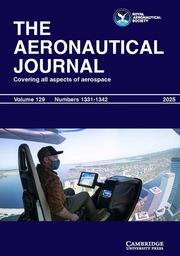No CrossRef data available.
Article contents
Implementation of an intelligent solution for acquiring telemetry from Alsat-2 satellites: leveraging machine learning for polarisation drive
Published online by Cambridge University Press: 14 May 2025
Abstract
This paper presents the development and implementation of a comprehensive system for acquiring telemetry from Alsat-2A and Alsat-2B satellites, whose orbits are phased 180 degrees apart, utilising the CDM600 demodulator. Integral to this system is an automatic learning module leveraging machine learning algorithms to optimise circular polarisation selection based on reception conditions. The software segment manages the demodulator, user interface, and coordinates the machine learning algorithm, drawing insights from historical polarisation data to construct predictive models for optimal polarisation selection. Through the integration of machine learning, this system aims to enhance telemetry signal reception quality, contributing to the success (Alsat-2A was launched on 12 July 2010, and Alsat-2B on 26 September 2016) of satellite missions.
Information
- Type
- Research Article
- Information
- Copyright
- © The Author(s), 2025. Published by Cambridge University Press on behalf of Royal Aeronautical Society


